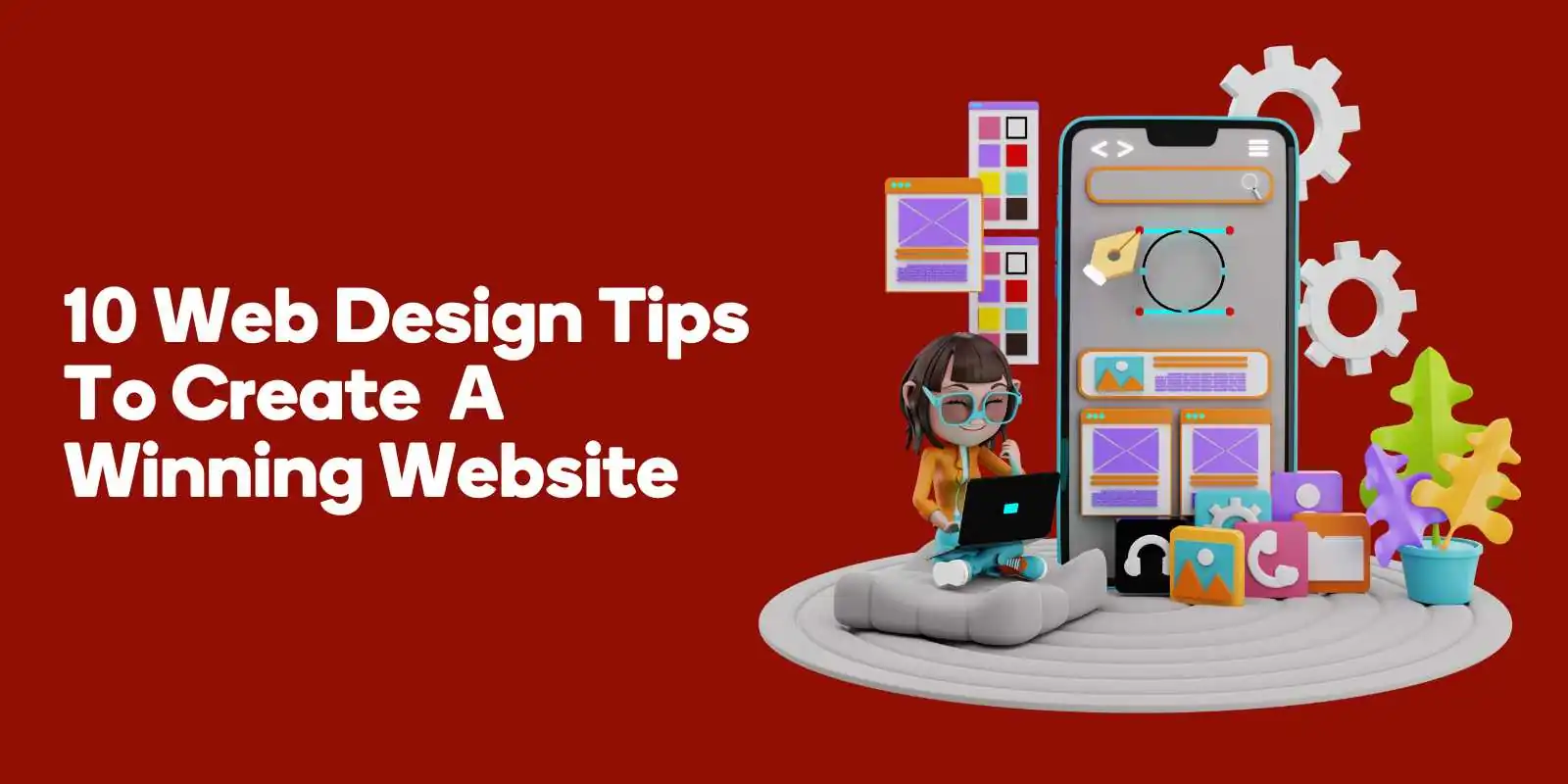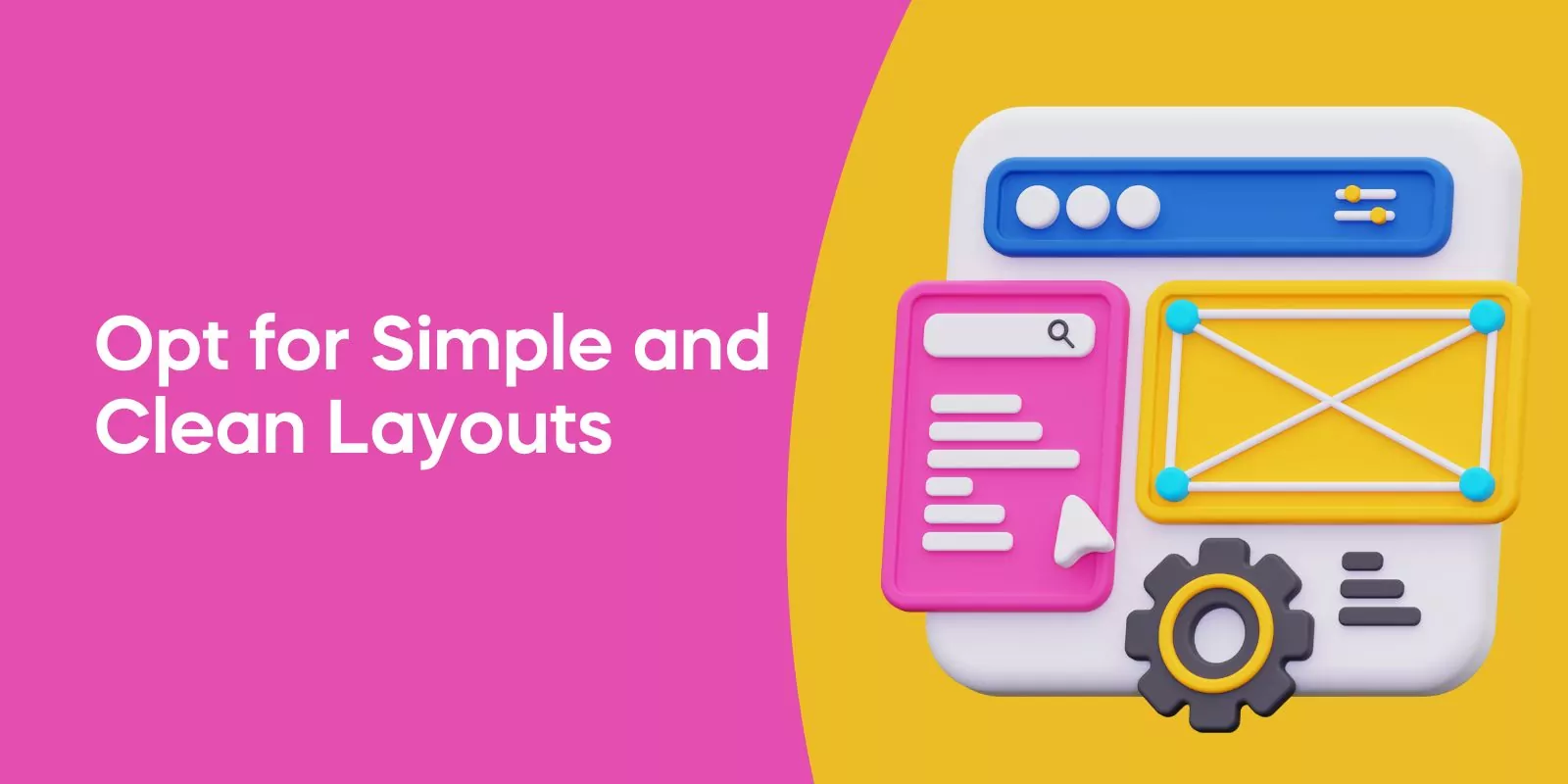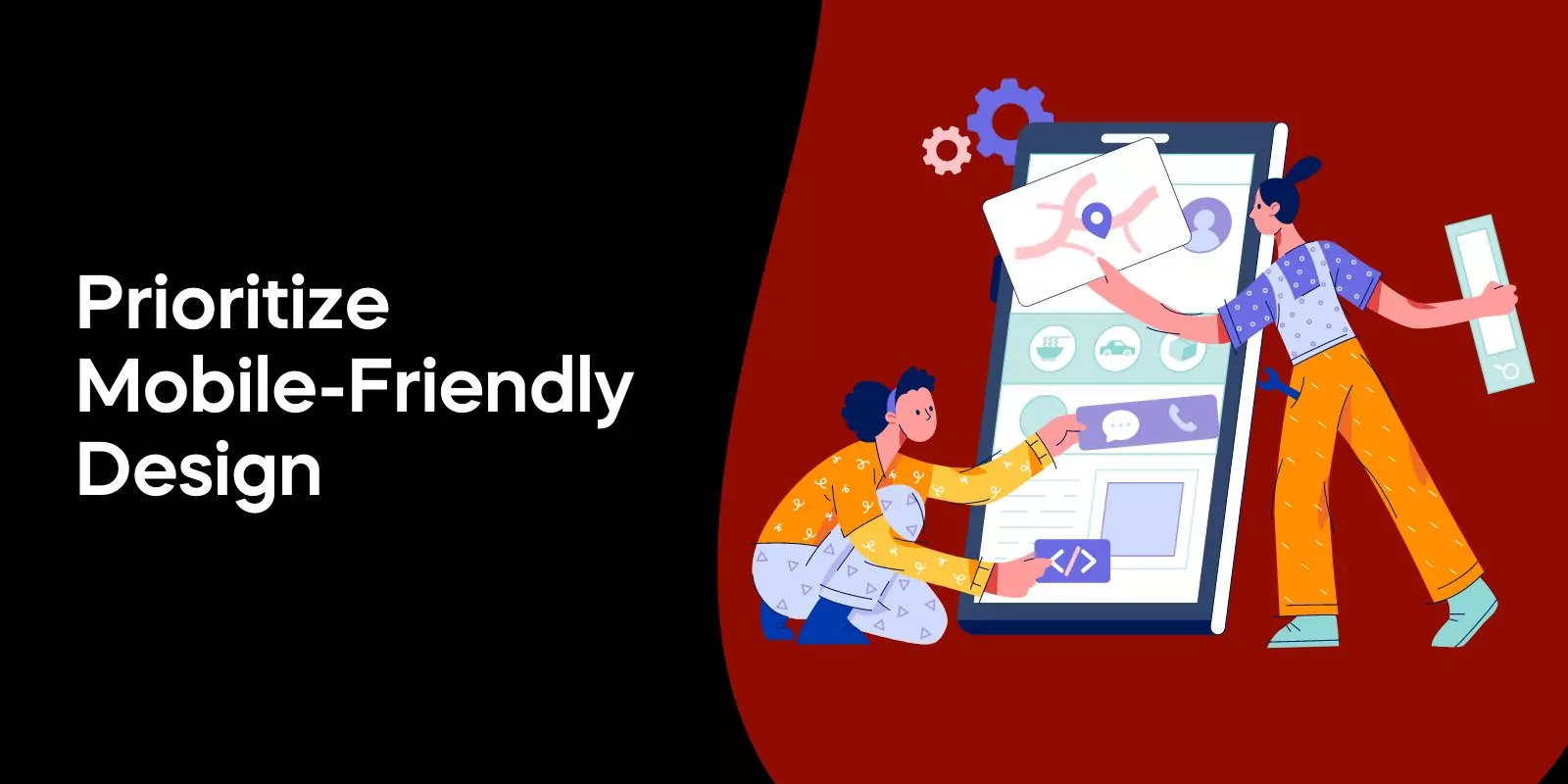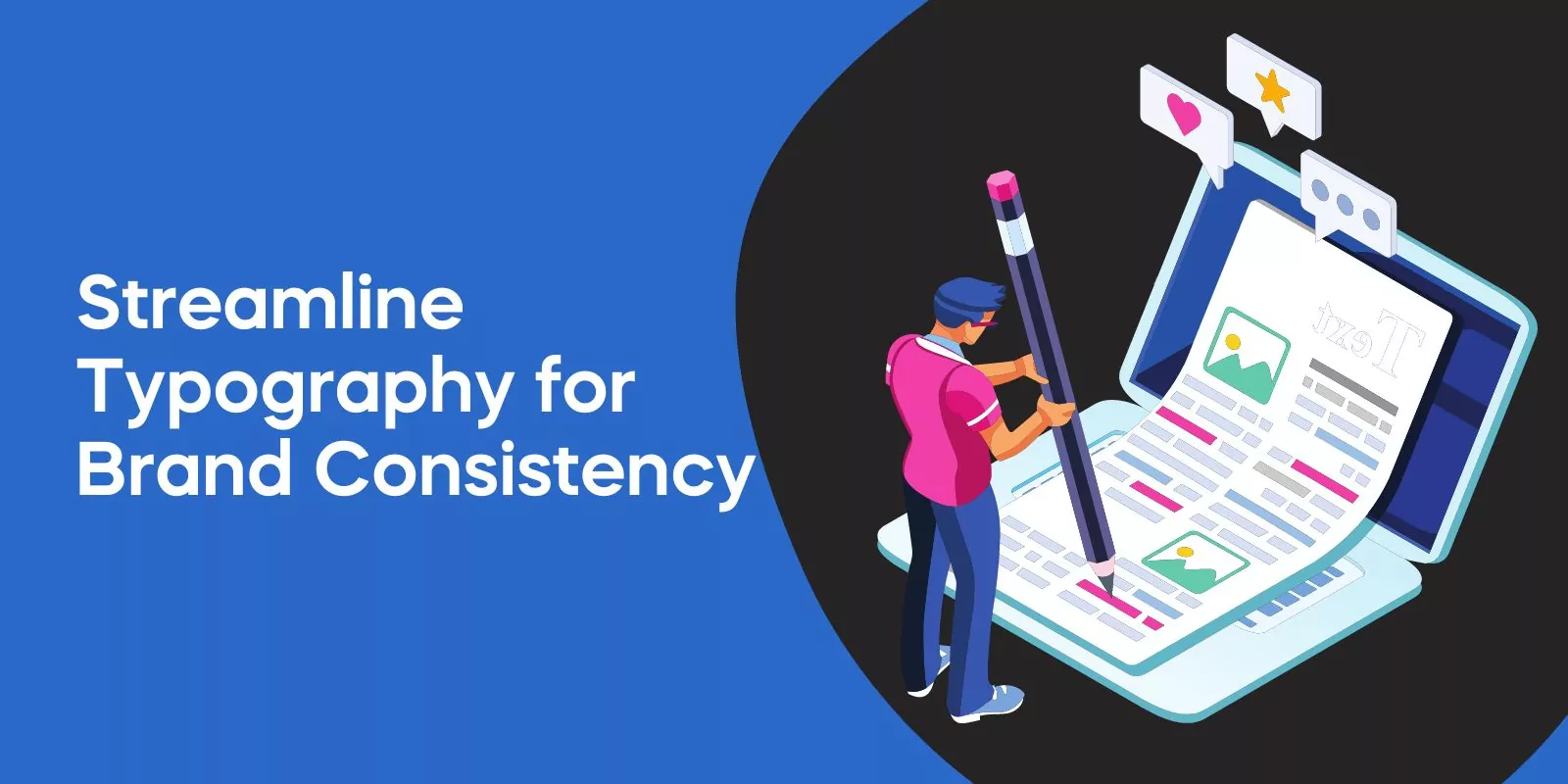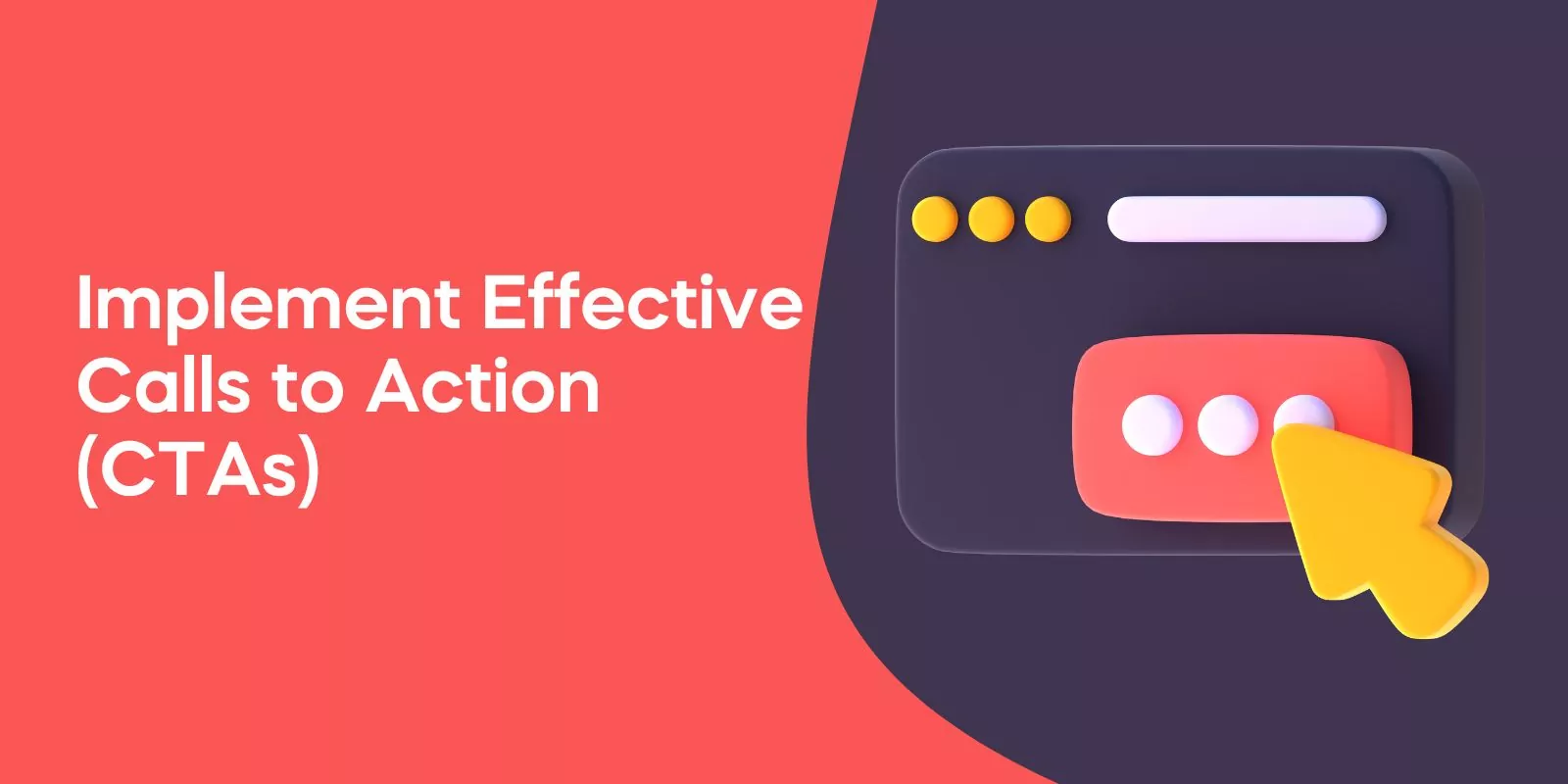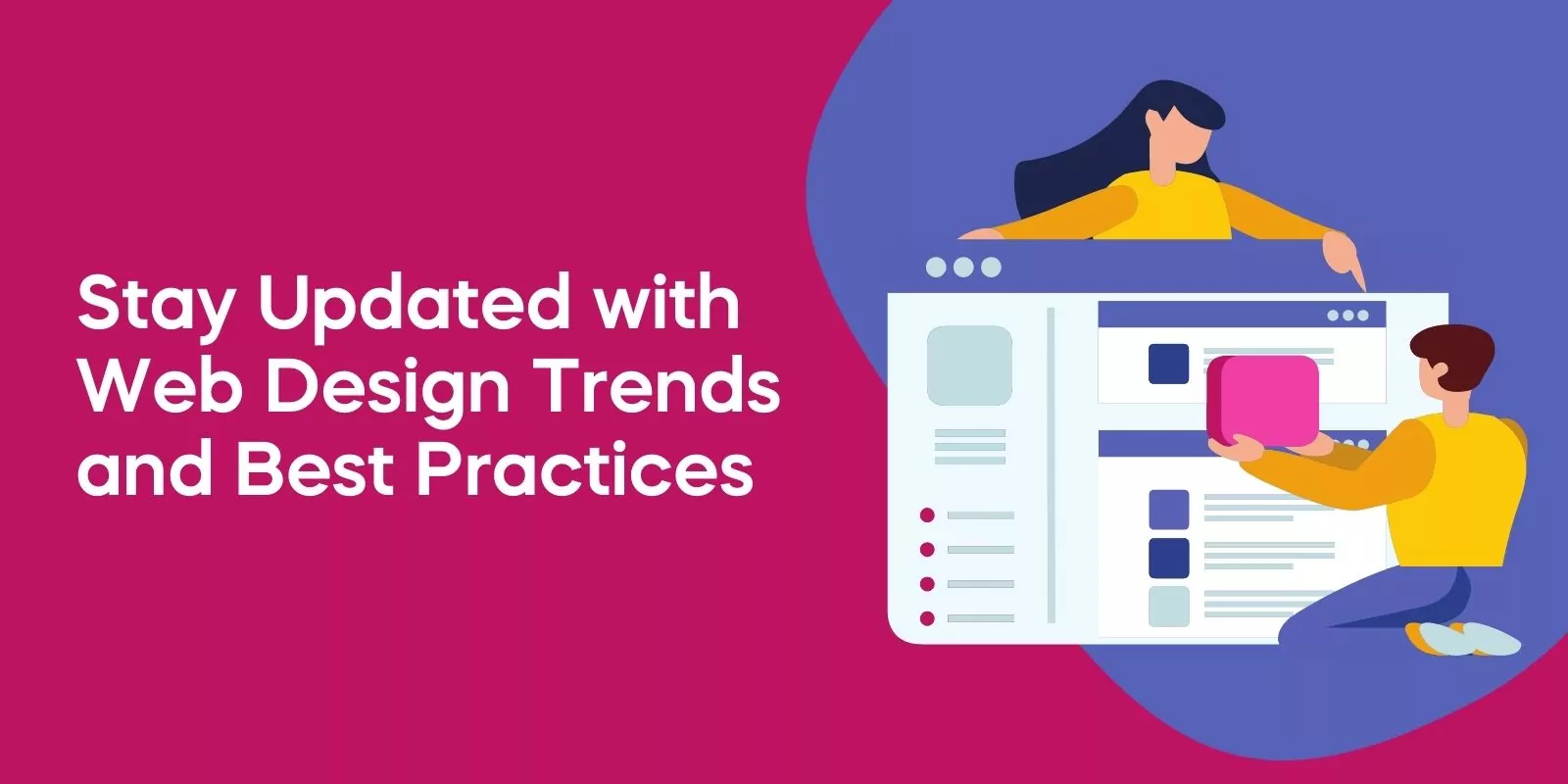By incorporating these strategic pointers into your web design process, you can ensure your website exudes both aesthetic appeal and functional excellence, seamlessly merging user experience with your business objectives.
So, whether you’re planning a website revamp or starting a fresh project, let these indispensable tips lead your way to a standout digital presence.
Emphasize Visual Hierarchy
Visual hierarchy is a key aspect of web design that helps organize elements to imply importance and guide viewers through the content.
A well-defined visual hierarchy ensures a smooth user experience by effectively using size, color, placement, and negative space.
For instance, larger elements can be utilized to draw attention to essential or important elements within, and color can be employed to create contrast and draw attention to specific elements.
Placement can be utilized to create a sense of order and hierarchy, while negative space can be employed to create a sense of balance and focus.
Mastering visual hierarchy is especially crucial for businesses looking to create their own professional website.
Incorporating visual hierarchy into your website can be achieved by employing a variety of techniques.
For example, leverage color theory to establish contrast and draw attention to certain elements, utilize visually prominent design elements to emphasize key information, and use negative white space to focus attention on important aspects of your site.
By following these professional design tips, you can create a visually appealing and user-friendly website that effectively guides your audience through your content.
Staying updated with the latest trends in visual hierarchy and design is essential for any web designer looking to create a successful website.
By mastering the art of visual hierarchy, you’ll be better equipped to create an engaging and effective website that captures users’ attention and encourages interaction.
Opt for Simple and Clean Layouts
Simple and clean layouts are aesthetically pleasing and easy to use, making them ideal for meeting user expectations.
Newbie web designers should focus on mastering simple and clean layouts before moving on to more complex designs, as these layouts possess high prototypicality and low visual complexity.
Adherence to web design standards can also increase the aesthetic appeal of a website, including the mobile site and desktop version.
A website container, which is composed of structure and style, plays a crucial role in creating a good and responsive website.
By opting for simple and clean layouts, you can ensure that your website effectively communicates your brand message and provides a seamless user experience across various devices and screen sizes.
Staying updated with the latest design trends and best practices can help you create a successful website that meets user expectations.
By focusing on simple and clean layouts, you’ll be better equipped to create a website that is both visually appealing and user-friendly.
Use a descriptive, keyphrase-focused headline high on the homepage
Ensure that your homepage headlines are descriptive and targeted. Without clarity, visitors may struggle to understand the purpose of your website.
By using a relevant keyphrase, you can highlight the significance of your content. Let’s avoid vague or overly clever marketing language and opt for a concise description instead.
Capture the essence of your business upfront, communicating the core message effectively to your audience.
Prioritize Mobile-Friendly Design
With the majority of browsing now done on mobile devices, it’s crucial to prioritize mobile-friendly design when creating your own web design.
Mobile responsiveness is an important factor for search engines, such as Google’s search rankings, and the web design community places a strong emphasis on mobile responsiveness due to its importance in modern web design.
In this blog post in the following subsections, we’ll dive deeper into responsive design, mobile-specific guidelines, and ensuring a seamless user experience on small screens.
Responsive Design
Responsive web design is a design approach that enables a website to adapt to the device a user is utilizing, ensuring an optimized experience tailored to the device being used.
This approach is essential for modern website design, as it allows for a consistent user experience across desktop and mobile devices.
Implementing responsive design is crucial for creating a successful website that caters to the needs of various users.
To gain an understanding of responsive design, resources such as the course material “Intro to Responsive Design” can provide an introduction to the concept of making designs more accessible.
By learning and implementing responsive design principles, web designers can create websites that look and function well on various devices and screen sizes.
Staying updated with the latest trends in responsive design is essential for any web designer looking to create a successful website.
Through mastering the art of responsive design, you’ll be better equipped to create an engaging and effective website that adapts to different screen sizes and devices, providing a consistent user experience across all platforms.
Prioritize Scrolling Over Clicking
Unlock the potential of sliders/accordions as an optimal method to showcase user data. These dynamic elements allow you to consolidate and organize information effectively, keeping less pertinent details tucked away while highlighting what truly matters.
Learn from Crazy Egg’s intriguing case study, where they condensed their sales page to be 20 times longer than the original version.
Experience a significant boost in turnover by adopting this approach. It’s a strategy that minimizes potential criticism, as studies show that users tend to scroll through content more than they click.
If your product or information spans multiple pages, it’s time to reconsider your layout and embrace the benefits of sliders/accordions.
Mobile-Specific Guidelines
Mobile-specific guidelines refer to design principles that are tailored to mobile devices, such as providing straightforward navigation, large touch areas, minimal clutter, sizable text, touch controls, and adhering to platform guidelines.
Adhering to these guidelines is essential to guarantee that your website is optimized for mobile users, taking into consideration touch interactions and limited screen space.
When designing for mobile UX, some of the best practices and constraints to consider include screen size, touch controls, and platform guidelines.
Following these mobile-specific guidelines, you can create a website that not only looks great on mobile devices, but also provides a seamless and enjoyable user experience.
Staying updated with the latest mobile-specific design guidelines is essential for any web designer looking to create a successful website.
Incorporating these guidelines into your design process, you’ll be better equipped to create a website that caters to the needs of mobile users, providing an optimized and seamless experience.
User Experience on Small Screens
Designers should prioritize constructing a user-friendly navigation structure that is optimized for small screens, such as reducing the number of navigation elements, enlarging buttons, and providing clear labels.
To optimize body text and content for readability on small screens, designers should utilize larger font sizes, increase line spacing, and select high contrast colors.
In order to emphasize the most pertinent information on small screens, designers may wish to utilize visual cues such as bold text, icons, and images to emphasize the most critical elements.
Focusing on providing a seamless user experience on small screens, you can ensure that your mobile users have an enjoyable and engaging experience when navigating your website.
Staying updated with the latest trends in user experience on small screens is essential for any web designer looking to create a successful website.
Incorporating these best practices into your design process, you’ll be better equipped to create a website that caters to the needs of mobile users, providing an optimized and seamless experience.
Enhance Navigation and Usability
Navigation plays a crucial role in web design, as it provides menus, buttons, and links that enable visitors to traverse the site.
If a website has inadequate navigation, users may have difficulty locating the desired information, resulting in them abandoning the entire site, in favor of a competitor’s.
To ensure a functional navigation, organizing the website under broad headings with specific subheadings can help visitors find information quickly.
In order to ensure an optimal user experience, it is important to tailor navigation to target users, organize the site content in an intuitive manner, and design the navigation in an accessible way that users interact with.
A functional navigation facilitates users in locating the pertinent information, thereby promoting extended engagement on the website.
Staying updated with the latest trends in navigation and usability is essential for any web designer looking to create a successful website.
By incorporating these best practices into your design process, you’ll be better equipped to create a website that provides a seamless and enjoyable user experience.
Utilize High-Quality Images and Visual Elements
The utilization of high-quality images and visual elements on e-commerce websites, such as photos, videos, and infographics, can captivate users and augment a website’s overall aesthetic charm.
When selecting images for a website, it is essential to guarantee that they are compatible with the content they are presented alongside.
Incorporating people pictures can draw attention and result in increased conversion, but it is recommended to avoid stock photos when selecting images of people for a website, as they lack authenticity and fail to create a trusting relationship with website visitors.
A study by the NN Group revealed that visitors tend to ignore stock photos of people and “filler” images, yet they pay attention to pictures of real people.
Consumers are much more likely to interact with video content than text. In fact, the gap in interaction is a staggering 10 times.
By utilizing high-quality images and visual elements, you can create a visually engaging website that effectively communicates your brand message and captures the attention of your audience.
Staying updated with the latest trends in imagery and visual elements is essential for any web designer looking to create a successful website.

Award-Winning
Sales Funnel & Website Expert
Ready for Revenue – Not Just “Traffic”?
- Websites that Work: Clean, fast, built to convert – no design fluff.
- Funnels that Sell for You: Step-by-step paths that turn clicks into paying customers.
- SEO That Hunts Buyers: Show up exactly when prospects reach for their wallets.
By incorporating these best practices into your design process, you’ll be better equipped to create a visually appealing website that effectively engages your target audience.
Streamline Typography for Brand Consistency
Typography in web design encompasses all visual aspects of text, including font, size, color, style, and letter/word/line spacing.
When selecting typography for a website, it is important to ensure that it complements the brand identity and is balanced with the other elements on the website.
Maintaining consistent typography in web design ensures a sense of order and congruence, thus allowing users to remain engaged and have an uninterrupted experience.
A universal style guide is a page that guarantees typography is consistent throughout a web design, helping maintain an overview of all text styles in place.
By streamlining typography across page elements on your website, you can create a cohesive look that maintains brand consistency and improves readability.
Staying updated with the latest trends in typography and best practices is essential for any web designer looking to create a successful website.
By incorporating professional web design tips into your design process, you’ll be better equipped to create a visually appealing website that effectively communicates your brand message.
Integrate Social Media Buttons Strategically
Incorporating social media buttons on your own business website enables businesses to establish a direct connection with potential customers and could result in increased conversions.
It is recommended to place them in the footer, rather than the header, to minimize distractions.
Including social media buttons on the service pages of a website can result in increased website traffic, heightened brand awareness, and the potential for lead generation.
To effectively incorporate social media buttons into your website, ensure the buttons are prominent yet unobtrusive, and maintain a consistent style and position on all pages.
Integrating social media icons and buttons strategically, you can encourage sharing and engagement, ultimately boosting your website’s overall performance.
Staying updated with the latest trends in social media button integration is essential for any web designer looking to create a successful website.
By incorporating these best practices into your design process, you’ll be better equipped to create an engaging and effective website that encourages user interaction and sharing.
Implement Effective Calls to Action (CTAs)
Effective calls to action (CTAs) incorporate action-oriented language, are concise, create a sense of urgency, and are personalized.
CTAs play a crucial role in directing users towards desired actions and enhancing conversion rates.
To create effective CTAs, utilize action-oriented language, brevity, urgency, and personalization.
Additionally, it is important that call to action to keep CTAs updated and use clear action words.
When positioning CTAs, it is important to take into account the user’s journey, placing them in locations where they are most likely to be visible and interacted with.
Furthermore, A/B testing can be used to identify the optimal placement for CTAs, ensuring that they effectively guide users towards desired actions and improve conversion rates.
Staying updated with the latest trends in CTA implementation is essential for any web designer looking to create a successful website.
By incorporating these best practices into your design process, you’ll be better equipped to create an engaging and effective website that effectively directs users towards desired actions and improves overall conversion rates.
Test and Optimize Website Performance
Website performance testing is a type of non-functional testing that assesses the responsiveness, throughput, and scalability of a website under test, which can be beneficial in optimizing the user experience and enhancing revenue generation.
Testing web pages against other websites is essential for creating a site that caters to the target market, recognizing areas where users have difficulty navigating the site, and making necessary adjustments to generate more leads and conversions.
Testing and optimizing website performance can be accomplished through a variety of means, including utilizing tools like Google PageSpeed Insights, GTmetrix, and WebPageTest.org to evaluate page speed, analyzing user engagement data, and A/B testing to maximize conversion rates.
Additionally, contacting WebFX for web design services can help ensure that your website performs optimally and effectively engages users.
Staying updated with the latest trends in website performance testing and optimization is essential for any web designer looking to create a successful website.
By incorporating these best practices into your design process, you’ll be better equipped to create an engaging and effective website that provides a seamless and enjoyable user experience.
Stay Updated with Web Design Trends and Best Practices
Remaining informed about web design trends and best practices is essential to ensure that your website remains current, modern, and competitive in the dynamic digital environment.
Relying on research for web design advice is essential for effectiveness and success.
Incorporating objective data into web design can facilitate the creation of successful web designs when building websites, as opposed to relying solely on subjective opinions.
Web designers can stay inspired by exploring Awwwards, Behance, Dribbble, and the Webflow Showcase, following renowned web designers on social media, and studying outstanding web designs.
By using skilled designers and staying updated with the latest web design trends and best practices, you can ensure that your website remains fresh and modern, keeping you competitive in the ever-evolving digital landscape.
Frequently Asked Questions
What are the 7 guidelines for a successful web design?
Creating an effective web design requires following 7 essential guidelines: using intuitive navigation, optimized content, easy-to-read typography, well-structured layout, responsive design, actionable calls to action and high-quality visuals.
Following these guidelines will help ensure that your website succeeds in delivering an enjoyable and successful user experience.
What are the five golden rules of web designing?
The Five Golden Rules of Web Design are focus on the message, keep the page element layout neat, choose user-friendly fonts, avoid animation hell, and make navigation easy.
By following these principles, web designers can create a successful design that enhances user experience.
What are the 5 stages of web design?
The web design process comprises of five essential steps; strategy, planning, design, development and launch. Each stage requires careful consideration to ensure the best result for any website.
By following these steps in a systematic manner, you can create a successful website that meets the objectives of the project.
How are websites designed?
The process of designing a website typically involves planning, researching, collecting materials, graphic design, content creation, coding (HTML/CSS) and testing. Depending on the size of the website and the features needed, this process can take anywhere from a few weeks to several months.
Web designers need to consider numerous factors when designing a website, such as the desired look and feel, user experience, functionality, and performance. With careful thought and consideration, a website’s design can create an engaging experience for visitors.
What is visual hierarchy in web design?
Visual hierarchy in web design is a tool for guiding viewers through content by establishing importance and order. It uses visual elements to organize the space and lead people’s eyes through it, creating a natural flow of information.
This helps viewers to comprehend the message quickly and effectively.
Conclusion
In conclusion, following these ten essential web design tips can greatly improve your website’s overall performance, user experience, and aesthetic appeal.
Create a standout website by prioritizing visual hierarchy, utilizing clean and simple layouts, and ensuring mobile-friendliness.
Enhance user experience through streamlined typography, high-quality visuals, strategic integration of social media buttons, effective CTAs, regular testing, optimization, and staying up-to-date with web design trends and best practices.
